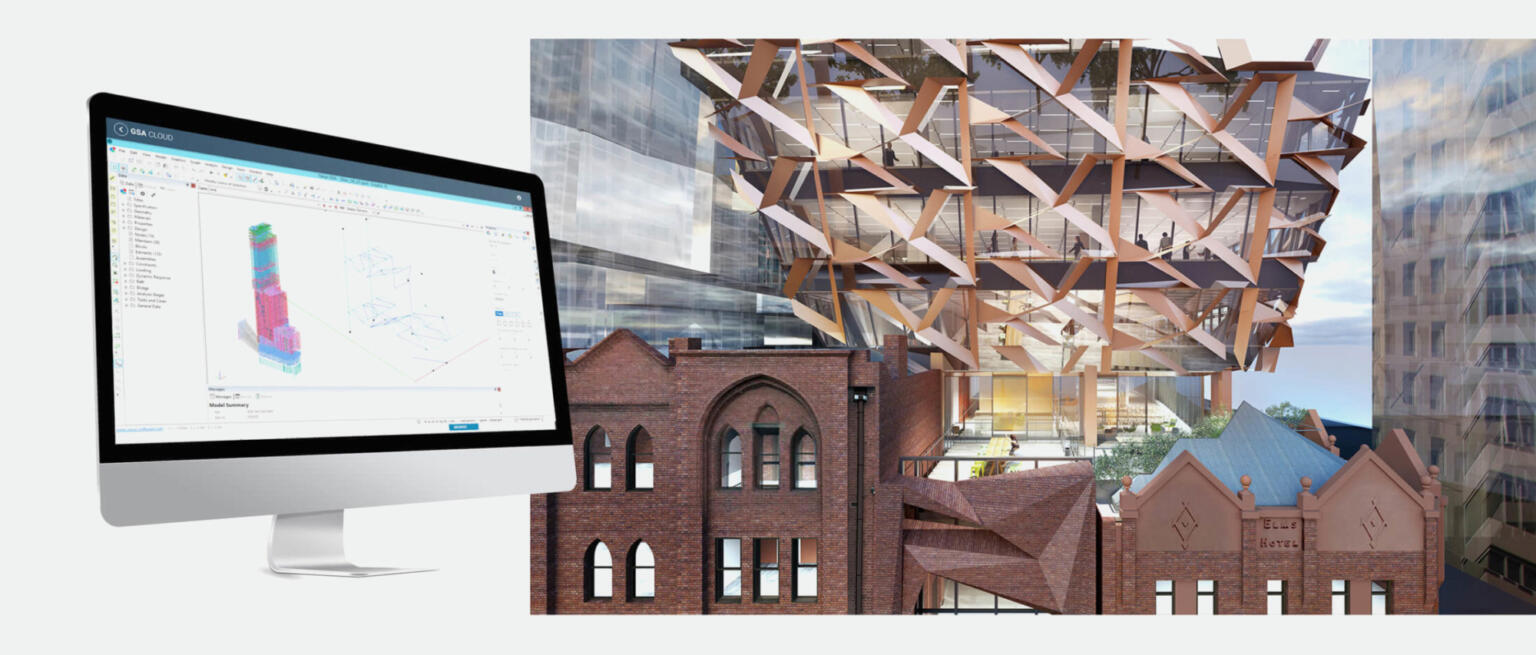Building in the cloud, from the ground up

OVERVIEW
From hours to minutes. Slalom Build and Arup created a cloud-enabled engineering software product that runs detailed analysis on complex building models, turning a lengthy ordeal into a 10-minute serverless breeze.
Scope
Amazon Web Services, Serverless Implementation, Cloud-Native App Development, Solution Ownership, Experience Design, Site Architecture, DevOps
Technology
Amazon S3, Amazon ECS Clusters, Amazon AppStream 2.0, AWS Glue, Amazon Athena, AWS Lambda
Laying the foundation
Arup is a world-renowned engineering company that specializes in creating some of the most iconic buildings in the world. The Sydney Opera House. The London Gherkin. Hong Kong International Airport. We’re talking game-changing buildings that challenge the way construction is conceptualized and completed. Thing is, every building, every bridge, every new-fangled architectural wonder, they all start as a model. Whether physical or digital, these models are analyzed and tested to ensure lasting structural integrity in all conditions. Will this building stand tall in an earthquake? Will it buckle in the wind? And to do that, a serious amount of computing power is needed.
Arup began developing proprietary software as early as the 1960s. And at that time, it meant a massive on-premise machine as big as the room it lived in. By the 80s the advent of the PC lead to the development of Oasys GSA – created to model and analyze simple structural models. As PCs and their operating systems evolved, the size of the model that could be run in GSA increased, but the engineers’ demands continued to grow to match – meaning more detailed modeling, more types of analysis, and more exploration of the design space. But while more powerful and convenient, timelines proved a much more stubborn adversary.
Because, in the end, it’s about time. (Isn’t it always?) Arup was ready to evolve what the application could be – and, like most things computing, the cloud was calling. Enter Slalom Build. Working together, the two teams took a user-driven approach to designing and building on the cloud. Say hello to the all-new, GSAcloud.

Performing analysis. Day-in, day-out
As construction complexity increases, the need to create safe, functional, and beautiful structures remains of paramount importance. And that means detailed analysis is vital. Unfortunately, for large models, this could take hours. Sometimes even heading home for the evening, leaving the model running. (Then hoping that the midnight cleaning crew didn’t trip on the cord and bring the whole thing crashing down. It happened.) Barring any overnight mishaps, the analysis could be reviewed the next morning.
But that was just the beginning. Construction is a team sport, sharing results with colleagues is essential to the review process. And as models evolved, the results from analysis can grow to gigabytes. That made files cumbersome, and collaboration painful.

Building a partnership for all conditions
Leveraging our Product Engineering Methodology (PEM), Slalom Build executed a robust discovery phase. First, detailing the everyday workflows in and out of the software. And that, of course, immediately shone a spotlight on the many pain points. From the amount of time it took to process files, to the difficulty sharing massive amounts of data, to the challenges in querying and acting upon the results.
“Our team has benefitted hugely from literally sitting next to someone from Slalom and working through things together. It created a very productive work environment to be sitting that closely in proximity.”
— Steve Hendry, Associate at Oasys
It was established early-on that GSA needed to be as serverless as possible. Maximizing AWS services, the team utilized Lambda, Amazon S3, Amazon ECS Clusters, Amazon AppStream 2.0, AWS Glue, and Amazon Athena.
Step functions were put into place to bring all lambda functions, message queues, APIs and the like into a single thread of execution. With Amazon ECS, the desktop version of GSA was built into a container and then redeployed into an elastic service cluster, helping to create the scale within the cloud the software needs. Amazon Athena allows the data files to be produced with SQL queries and AWS Glue transforms the data files into other formats, such as post-gres. Ultimately, it would all come together to generate more throughput in the cloud platform than would ever be achievable on a desktop.

Empowering creativity to build. Together.
We’re believers in creating strong partnerships, placing tremendous value on co-creation. And in true Build as a Service fashion, our teams worked side by side. In fact, Slalom Build moved into the Arup office, making ourselves instantly available, just a chair swivel away. Through installing lean processes and establishing technology tracks, we seamlessly handed off GSAcloud, while helping to create positive cultural changes at Arup.
Building on AWS, the teams were able to create a robust solution that truly modernizes the platform. Many models require 10-12 tasks that need to be analyzed – which can now all run in parallel. And that means that a process that might take an hour now takes as little as ten minutes – a 600% improvement! Sharing and reviewing results has also vastly improved. On the cloud, disparate teams now have access to a shared portal. The results are available to all to view, modify, and resubmit. It’s a tremendous timesaver that allows the entire team to continue to focus on creativity as well as structural integrity.
With the new GSAcloud, we’ve only set the first stone. The testing phase of the new application is well underway, and that’s creating buzz and excitement within the team. By encouraging the alpha test users to adopt this new way of working, the goal is to roll the application out in phases to all engineers and architects.
By helping make Arup cloud-centric, together we’ve opened the dialogue for engineers to be even more creative. As they create the next generation of our built environment, they can now find new ways to test, analyze, adjust, and build the future all around us. And that’s empowering.
Next Up
